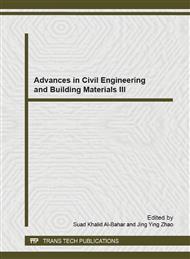p.90
p.95
p.100
p.105
p.110
p.115
p.120
p.124
p.129
Seismic Evaluation of Base Isolated System Equipped with Shape Memory Alloys
Abstract:
Seismic isolation system is an example of passive control system that effectively improves the performance of structures. This research discusses the seismic performance of a elastomeric base isolation system which provide the combined features of vertical load support, horizontal flexibility and energy absorbing capacity, utilizing shape memory alloys that provides re-centering force and additional damping in the system. Also this paper compares the effect of such alloys with memory effect and/or superelasticity (with pre-straining) in base isolated structure. To provide such comparison, a nonlinear structural model has been developed on some benchmark control problems and some health monitoring evaluation criterias are used. The smart base isolation utilizes the different responses of shape memory alloys at several levels of strain to control the displacements of the rubber bearing and base shear at excitation level. Furthermore the proposed based isolation systems has enhanced performance in terms of response reduction and re-centering capacity.
Info:
Periodical:
Pages:
110-114
Citation:
Online since:
December 2013
Authors:
Price:
Сopyright:
© 2014 Trans Tech Publications Ltd. All Rights Reserved
Share:
Citation:


